Enrique Lopez Droguett
Towards an efficient Iris Recognition System on Embedded Devices
Oct 24, 2022Abstract:Iris Recognition (IR) is one of the market's most reliable and accurate biometric systems. Today, it is challenging to build NIR-capturing devices under the premise of hardware price reduction. Commercial NIR sensors are protected from modification. The process of building a new device is not trivial because it is required to start from scratch with the process of capturing images with quality, calibrating operational distances, and building lightweight software such as eyes/iris detectors and segmentation sub-systems. In light of such challenges, this work aims to develop and implement iris recognition software in an embedding system and calibrate NIR in a contactless binocular setup. We evaluate and contrast speed versus performance obtained with two embedded computers and infrared cameras. Further, a lightweight segmenter sub-system called "Unet_xxs" is proposed, which can be used for iris semantic segmentation under restricted memory resources.
Learning to Predict Fitness for Duty using Near Infrared Periocular Iris Images
Sep 04, 2022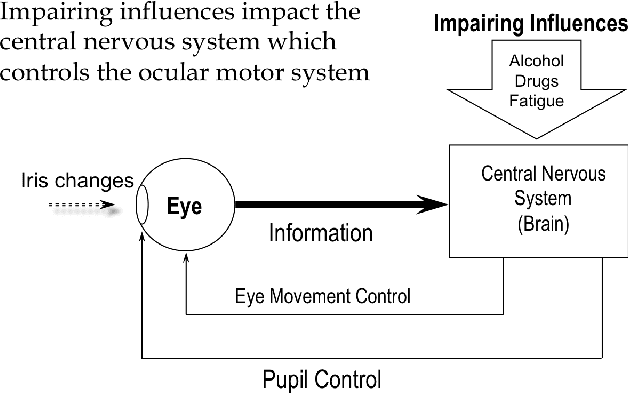

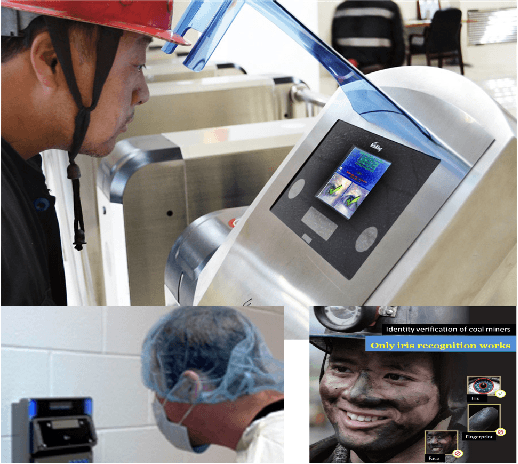

Abstract:This research proposes a new database and method to detect the reduction of alertness conditions due to alcohol, drug consumption and sleepiness deprivation from Near-Infra-Red (NIR) periocular eye images. The study focuses on determining the effect of external factors on the Central Nervous System (CNS). The goal is to analyse how this impacts iris and pupil movement behaviours and if it is possible to classify these changes with a standard iris NIR capture device. This paper proposes a modified MobileNetV2 to classify iris NIR images taken from subjects under alcohol/drugs/sleepiness influences. The results show that the MobileNetV2-based classifier can detect the Unfit alertness condition from iris samples captured after alcohol and drug consumption robustly with a detection accuracy of 91.3% and 99.1%, respectively. The sleepiness condition is the most challenging with 72.4%. For two-class grouped images belonging to the Fit/Unfit classes, the model obtained an accuracy of 94.0% and 84.0%, respectively, using a smaller number of parameters than the standard Deep learning Network algorithm. This work is a step forward in biometric applications for developing an automatic system to classify "Fitness for Duty" and prevent accidents due to alcohol/drug consumption and sleepiness.
Alcohol Consumption Detection from Periocular NIR Images Using Capsule Network
Sep 04, 2022



Abstract:This research proposes a method to detect alcohol consumption from Near-Infra-Red (NIR) periocular eye images. The study focuses on determining the effect of external factors such as alcohol on the Central Nervous System (CNS). The goal is to analyse how this impacts on iris and pupil movements and if it is possible to capture these changes with a standard iris NIR camera. This paper proposes a novel Fused Capsule Network (F-CapsNet) to classify iris NIR images taken under alcohol consumption subjects. The results show the F-CapsNet algorithm can detect alcohol consumption in iris NIR images with an accuracy of 92.3% using half of the parameters as the standard Capsule Network algorithm. This work is a step forward in developing an automatic system to estimate "Fitness for Duty" and prevent accidents due to alcohol consumption.
A Novel Capsule Neural Network Based Model for Drowsiness Detection Using Electroencephalography Signals
Apr 04, 2022



Abstract:The early detection of drowsiness has become vital to ensure the correct and safe development of several industries' tasks. Due to the transient mental state of a human subject between alertness and drowsiness, automated drowsiness detection is a complex problem to tackle. The electroencephalography signals allow us to record variations in an individual's brain's electrical potential, where each of them gives specific information about a subject's mental state. However, due to this type of signal's nature, its acquisition, in general, is complex, so it is hard to have a large volume of data to apply techniques of Deep Learning for processing and classification optimally. Nevertheless, Capsule Neural Networks are a brand-new Deep Learning algorithm proposed for work with reduced amounts of data. It is a robust algorithm to handle the data's hierarchical relationships, which is an essential characteristic for work with biomedical signals. Therefore, this paper presents a Deep Learning-based method for drowsiness detection with CapsNet by using a concatenation of spectrogram images of the electroencephalography signals channels. The proposed CapsNet model is compared with a Convolutional Neural Network, which is outperformed by the proposed model, which obtains an average accuracy of 86,44% and 87,57% of sensitivity against an average accuracy of 75,86% and 79,47% sensitivity for the CNN, showing that CapsNet is more suitable for this kind of datasets and tasks.
A generic physics-informed neural network-based framework for reliability assessment of multi-state systems
Dec 01, 2021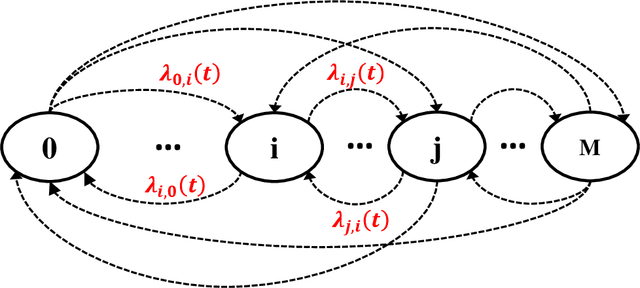

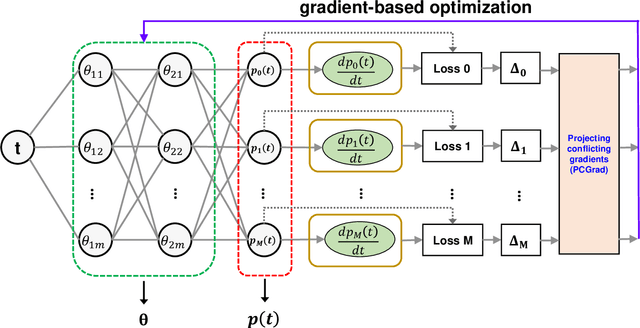

Abstract:In this paper, we leverage the recent advances in physics-informed neural network (PINN) and develop a generic PINN-based framework to assess the reliability of multi-state systems (MSSs). The proposed methodology consists of two major steps. In the first step, we recast the reliability assessment of MSS as a machine learning problem using the framework of PINN. A feedforward neural network with two individual loss groups are constructed to encode the initial condition and state transitions governed by ordinary differential equations (ODEs) in MSS. Next, we tackle the problem of high imbalance in the magnitude of the back-propagated gradients in PINN from a multi-task learning perspective. Particularly, we treat each element in the loss function as an individual task, and adopt a gradient surgery approach named projecting conflicting gradients (PCGrad), where a task's gradient is projected onto the norm plane of any other task that has a conflicting gradient. The gradient projection operation significantly mitigates the detrimental effects caused by the gradient interference when training PINN, thus accelerating the convergence speed of PINN to high-precision solutions to MSS reliability assessment. With the proposed PINN-based framework, we investigate its applications for MSS reliability assessment in several different contexts in terms of time-independent or dependent state transitions and system scales varying from small to medium. The results demonstrate that the proposed PINN-based framework shows generic and remarkable performance in MSS reliability assessment, and the incorporation of PCGrad in PINN leads to substantial improvement in solution quality and convergence speed.
An Uncertainty-Informed Framework for Trustworthy Fault Diagnosis in Safety-Critical Applications
Oct 08, 2021


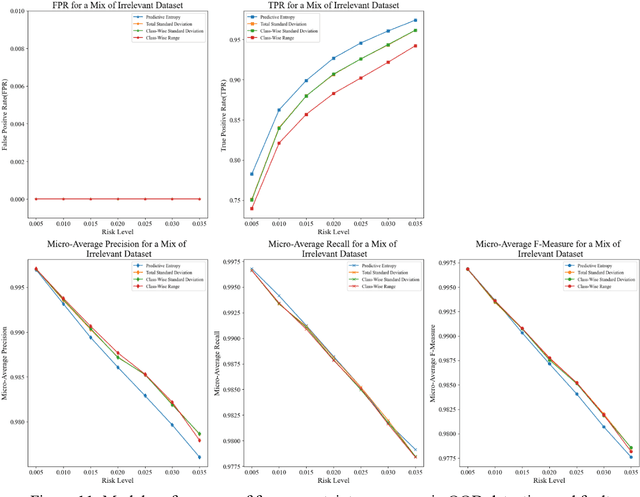
Abstract:There has been a growing interest in deep learning-based prognostic and health management (PHM) for building end-to-end maintenance decision support systems, especially due to the rapid development of autonomous systems. However, the low trustworthiness of PHM hinders its applications in safety-critical assets when handling data from an unknown distribution that differs from the training dataset, referred to as the out-of-distribution (OOD) dataset. To bridge this gap, we propose an uncertainty-informed framework to diagnose faults and meanwhile detect the OOD dataset, enabling the capability of learning unknowns and achieving trustworthy fault diagnosis. Particularly, we develop a probabilistic Bayesian convolutional neural network (CNN) to quantify both epistemic and aleatory uncertainties in fault diagnosis. The fault diagnosis model flags the OOD dataset with large predictive uncertainty for expert intervention and is confident in providing predictions for the data within tolerable uncertainty. This results in trustworthy fault diagnosis and reduces the risk of erroneous decision-making, thus potentially avoiding undesirable consequences. The proposed framework is demonstrated by the fault diagnosis of bearings with three OOD datasets attributed to random number generation, an unknown fault mode, and four common sensor faults, respectively. The results show that the proposed framework is of particular advantage in tackling unknowns and enhancing the trustworthiness of fault diagnosis in safety-critical applications.
Big Machinery Data Preprocessing Methodology for Data-Driven Models in Prognostics and Health Management
Oct 08, 2021
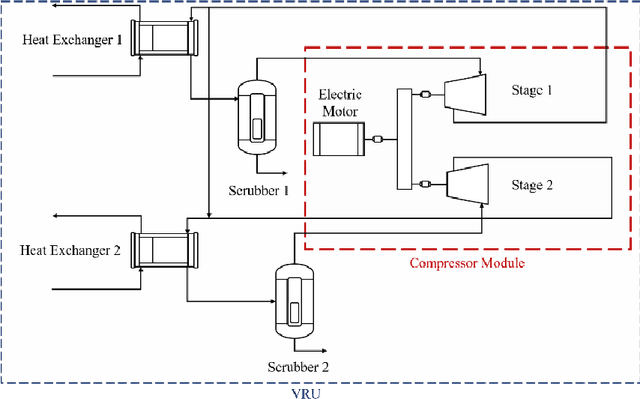

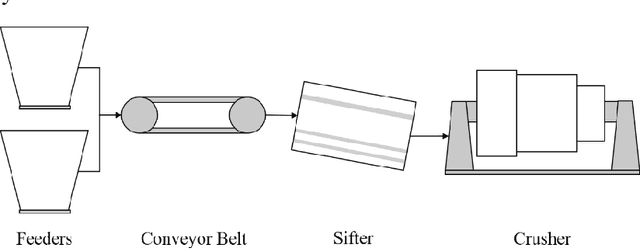
Abstract:Sensor monitoring networks and advances in big data analytics have guided the reliability engineering landscape to a new era of big machinery data. Low-cost sensors, along with the evolution of the internet of things and industry 4.0, have resulted in rich databases that can be analyzed through prognostics and health management (PHM) frameworks. Several da-ta-driven models (DDMs) have been proposed and applied for diagnostics and prognostics purposes in complex systems. However, many of these models are developed using simulated or experimental data sets, and there is still a knowledge gap for applications in real operating systems. Furthermore, little attention has been given to the required data preprocessing steps compared to the training processes of these DDMs. Up to date, research works do not follow a formal and consistent data preprocessing guideline for PHM applications. This paper presents a comprehensive, step-by-step pipeline for the preprocessing of monitoring data from complex systems aimed for DDMs. The importance of expert knowledge is discussed in the context of data selection and label generation. Two case studies are presented for validation, with the end goal of creating clean data sets with healthy and unhealthy labels that are then used to train machinery health state classifiers.
Physics-Informed Deep Learning: A Promising Technique for System Reliability Assessment
Sep 05, 2021


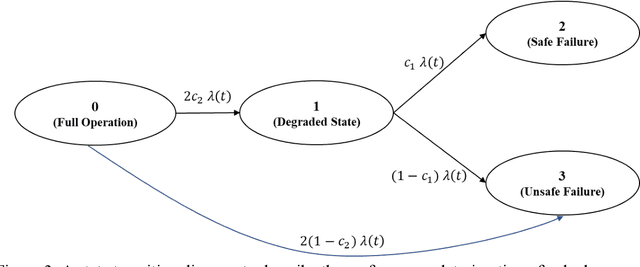
Abstract:Considerable research has been devoted to deep learning-based predictive models for system prognostics and health management in the reliability and safety community. However, there is limited study on the utilization of deep learning for system reliability assessment. This paper aims to bridge this gap and explore this new interface between deep learning and system reliability assessment by exploiting the recent advances of physics-informed deep learning. Particularly, we present an approach to frame system reliability assessment in the context of physics-informed deep learning and discuss the potential value of physics-informed generative adversarial networks for the uncertainty quantification and measurement data incorporation in system reliability assessment. The proposed approach is demonstrated by three numerical examples involving a dual-processor computing system. The results indicate the potential value of physics-informed deep learning to alleviate computational challenges and combine measurement data and mathematical models for system reliability assessment.
Semantic Segmentation of Periocular Near-Infra-Red Eye Images Under Alcohol Effects
Jun 30, 2021

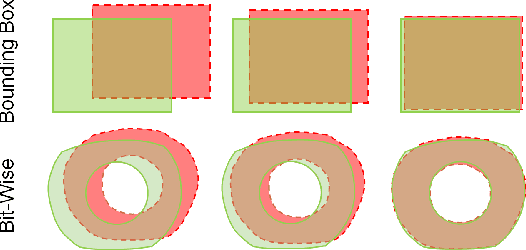
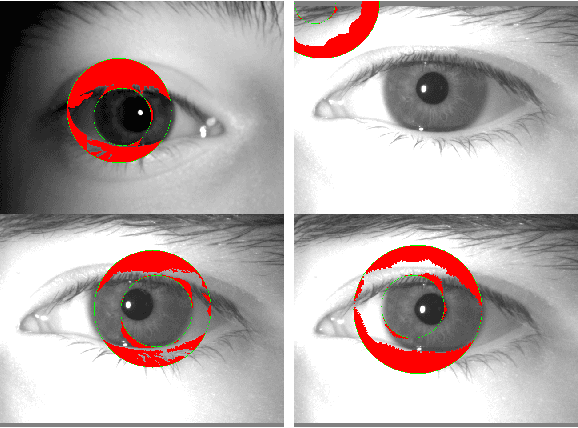
Abstract:This paper proposes a new framework to detect, segment, and estimate the localization of the eyes from a periocular Near-Infra-Red iris image under alcohol consumption. The purpose of the system is to measure the fitness for duty. Fitness systems allow us to determine whether a person is physically or psychologically able to perform their tasks. Our framework is based on an object detector trained from scratch to detect both eyes from a single image. Then, two efficient networks were used for semantic segmentation; a Criss-Cross attention network and DenseNet10, with only 122,514 and 210,732 parameters, respectively. These networks can find the pupil, iris, and sclera. In the end, the binary output eye mask is used for pupil and iris diameter estimation with high precision. Five state-of-the-art algorithms were used for this purpose. A mixed proposal reached the best results. A second contribution is establishing an alcohol behavior curve to detect the alcohol presence utilizing a stream of images captured from an iris instance. Also, a manually labeled database with more than 20k images was created. Our best method obtains a mean Intersection-over-Union of 94.54% with DenseNet10 with only 210,732 parameters and an error of only 1-pixel on average.
Uncovering the Underlying Physics of Degrading System Behavior Through a Deep Neural Network Framework: The Case of Remaining Useful Life Prognosis
Jun 10, 2020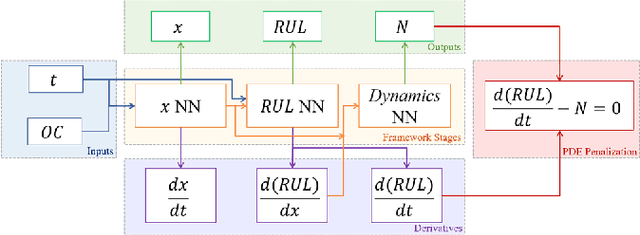
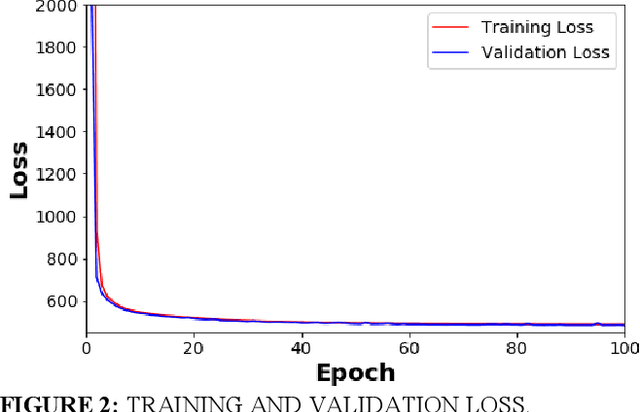
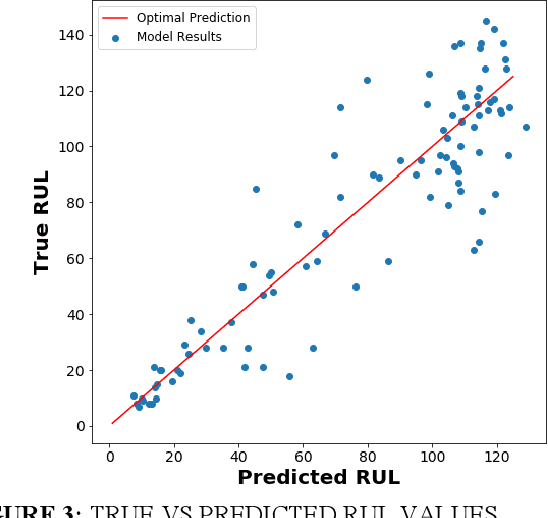
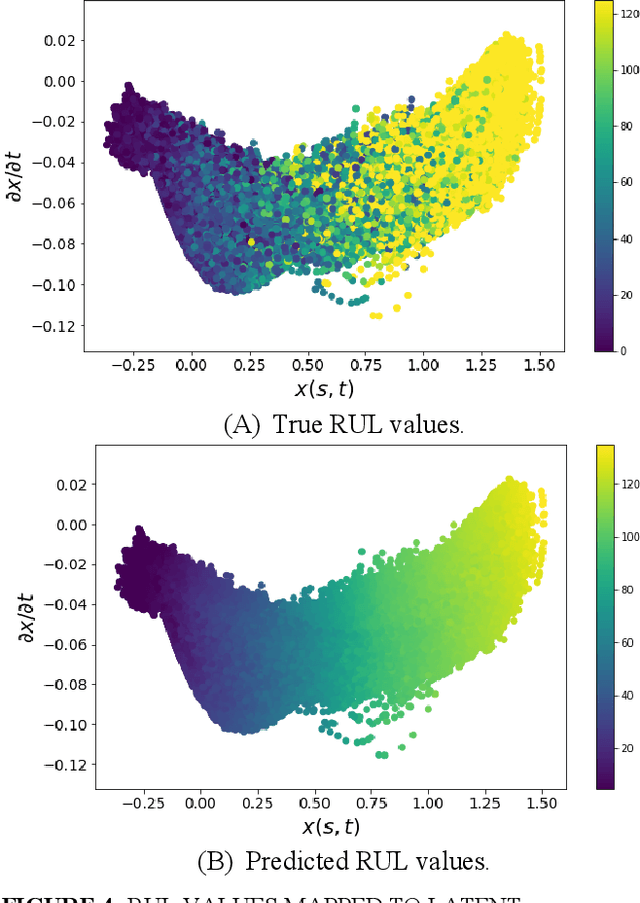
Abstract:Deep learning (DL) has become an essential tool in prognosis and health management (PHM), commonly used as a regression algorithm for the prognosis of a system's behavior. One particular metric of interest is the remaining useful life (RUL) estimated using monitoring sensor data. Most of these deep learning applications treat the algorithms as black-box functions, giving little to no control of the data interpretation. This becomes an issue if the models break the governing laws of physics or other natural sciences when no constraints are imposed. The latest research efforts have focused on applying complex DL models to achieve a low prediction error rather than studying how the models interpret the behavior of the data and the system itself. In this paper, we propose an open-box approach using a deep neural network framework to explore the physics of degradation through partial differential equations (PDEs). The framework has three stages, and it aims to discover a latent variable and corresponding PDE to represent the health state of the system. Models are trained as a supervised regression and designed to output the RUL as well as a latent variable map that can be used and interpreted as the system's health indicator.
 Add to Chrome
Add to Chrome Add to Firefox
Add to Firefox Add to Edge
Add to Edge